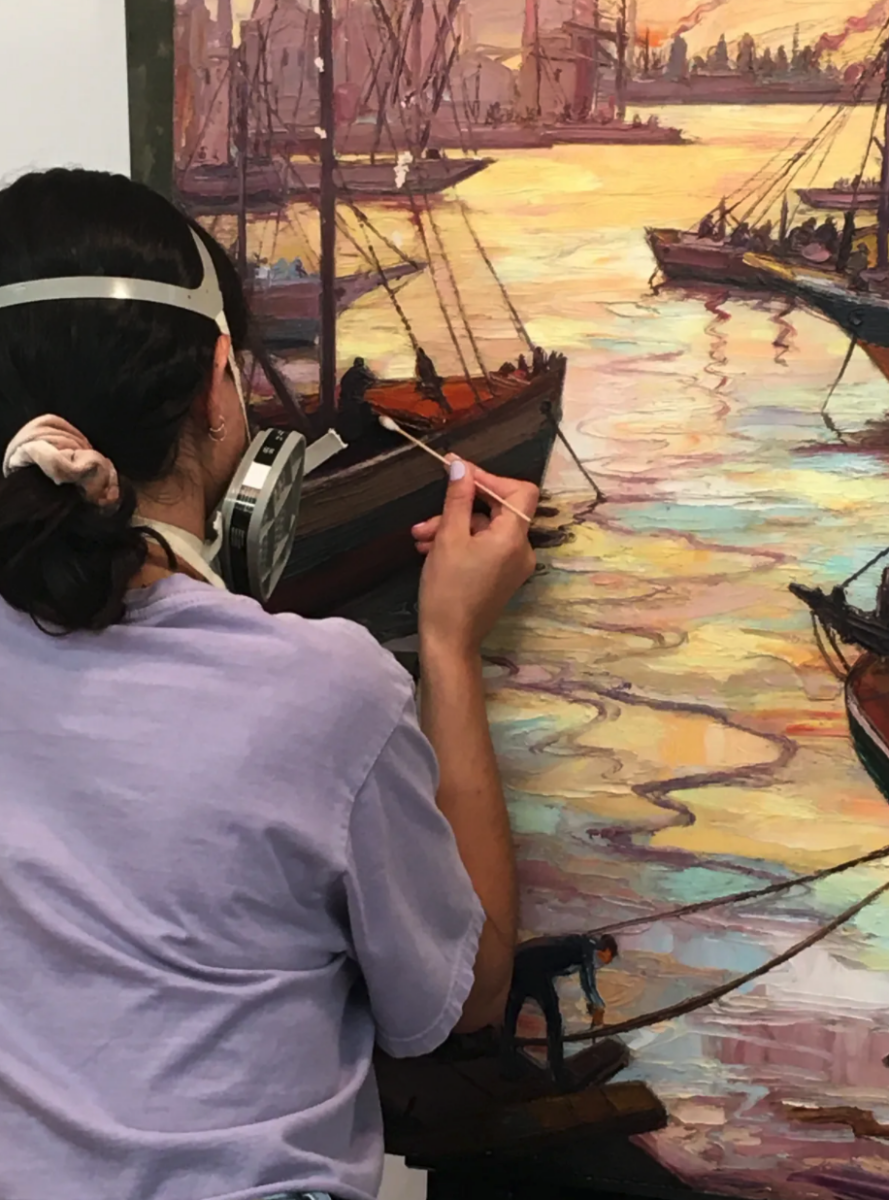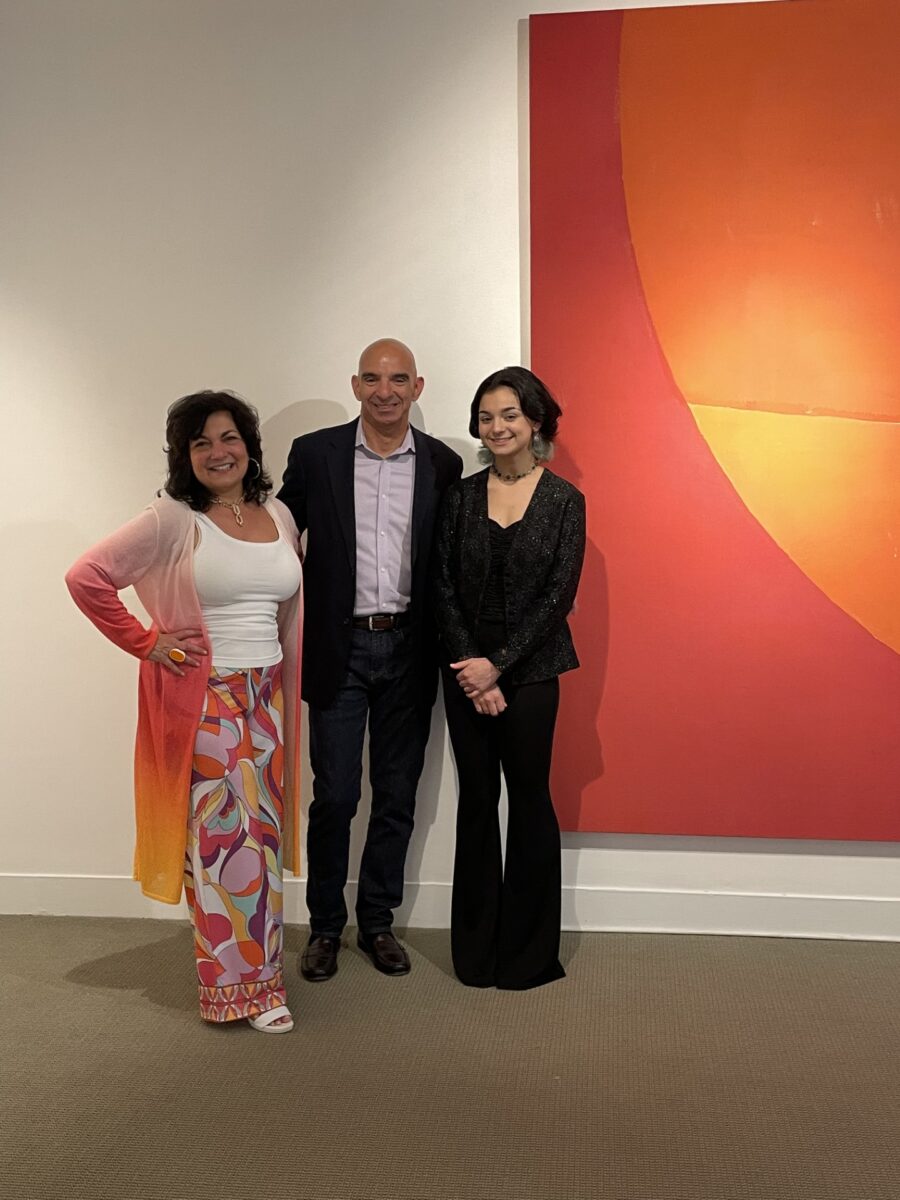Art restoration as a family business
At the Fairfield studio of Troy Fine Art Services, the Amuso family perform delicate operations on oil paintings.
Troy Amuso spends much of his day repairing damage that can range from carefully stripping and replacing the stained varnish of a landscape that hung in the quarters of a frequent smoker to patching over a hole in an ancestor’s portrait left by a child who both looked and touched.
The work requires intense research, steady hands, and an understanding of the subtle changes in chemistry that pigments can undergo. Clients also need to know that their works of art are in good hands.

“It’s much like going to the doctor,” Amuso said. “People will ask me is it you that will be working on my painting? And I say, ‘I’m going to do the work.’ At any stretch where it’s not me doing your painting it will be my daughter Ava [Amuso] who was trained by me to do certain parts of the process, but aside from that nobody is going to touch your painting. That gives people a lot of confidence.”
“That’s a normal sort of question before somebody takes a scalpel and does surgery on my head,” interjected Amuso’s business partner and wife, Denise DiGrigoli, noting that even the paintings with relatively low financial value can be incredibly important to clients paying for a restoration. “There is a certain high-level skill set that comes with what we do here, so the person will be getting a service that’s equivalent to what the painting is going to receive.”
Daughter Ava Amuso, a senior in UMass Amherst’s pre-law track, is also an active part of the business. She grew up in the workshop, watching her mother manage the business and her father carefully bring works of art back to life. Learning the trade from her father, she has since become a Junior Conservator, after discovering she has the necessary predisposition.
“I think it really requires a specific personality type,” the youngest Amuso said. “Somebody that has the ability to be extremely, meticulously, attentive to small detail. You need to literally have a steady hand and patience.”
She noted that her parents preferred her to any outside help since they have long known she was a good fit for the business, something that can take a long time to realize.
Troy Amuso’s path was also long. He started learning his trade working as a teenaged apprentice under Yan Vanderviver, a renowned Dutch art conservator.
“Through a friend of a friend I ended up getting a job working for Yan after school,” Amuso recalled. “He handled a lot of the restoration and conservation for the Metropolitan Museum of Art in those days, so I got to spend time around some very major master paintings on a daily basis. Paintings done by masters like Rembrandt and Turner and Renoir. That kind of sold me on it and hooked me into it.”

That afterschool job led Amuso to study fine art and build a career in the field of restoration, although it was not until he met DiGrigoli that they founded Troy Fine Art Services in 1996.
Both had connections in the region, and Fairfield provided easy access to private collections throughout one of the country’s wealthiest counties in addition to New York City.
DiGrigoli, who also has a background in design and art, took the lead on the business side of operations and keeps her focus on ensuring that Troy Fine Art Servcies can continue to operate and grow even in the unprecedented circumstances around the Covid pandemic.
“What we found was people had time to be in their home and figure out what was valuable to them,” DiGrigoli said of the impact of the pandemic on business. “Grandma’s painting in the attic that they never bothered to take 10 seconds to look at now became a source of conversation, became a source of memory, provided a sense of peace. And we found many of those projects came through our doors during the pandemic.”
Ten seconds is also all the time that Troy Fine Art Services needs to spark new interest in the profession and painting in general. Despite an emphasis on a high-end boutique service, the family’s passion for the craft has led to an impressive following of thousands of users on Tiktok and Instagram who watch restoration in action, including correcting mistakes made in previous attempts at preservation.
“Many people say this is like my dream job!” added Troy Amuso. “People have no clue how to get started in this world.”
“I think it’s super important,” Ava Amuso said, noting that the paths she and her father took into the business were no longer widely available. “We’re talking about this kind of niche and dying art. And that’s why it’s important for people to be exposed to and turned onto it rather than discouraged and feeling like it’s impossible to enter this field.”
While the family admits that some clients have found them through their social media posts, DiGrigoli likened the impulse to share on social media to their presentations for museums and art conservancies about their process.
“We are artists at the core of it all,” she said. “And it’s about educating. Unless somebody went off to art school or was exposed to it at a young age like Ava, if they’re one of the 80,000 mostly young people who follow us are saying ‘Oh my God, that’s so cool, where did you learn to do that?'”